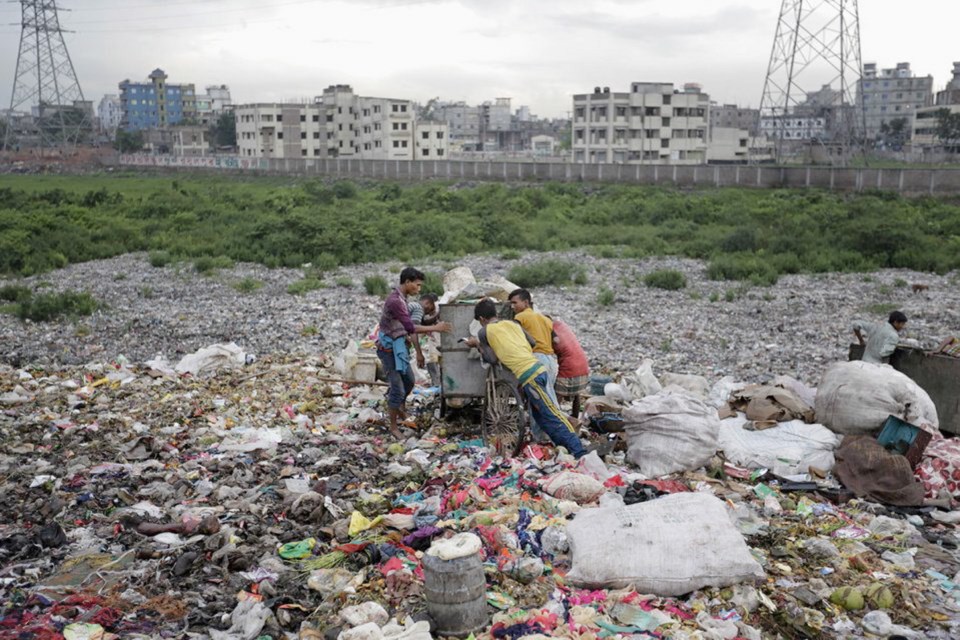The concept of the ecological footprint was developed by Mathis Wackernagel and Bill Rees at the University of British Columbia in the early 1990s. They were trying to find a way to express in simple terms our impact on the Earth. The widespread use of the concept since then suggests they succeeded.
The ecological footprint measures our impact in terms of the amount of biologically productive land and sea we need to provide the crops and fish we use for food, the grass and feed crops we use for livestock, the timber we use for paper and wood, and the land we need planted in trees to absorb our carbon emissions (“energy land”). This is then compared to the actual biological capacity of the Earth.
Of course, like all indicators, it is only a partial representation of reality. For example, it does not include mining’s impacts, nor the area needed to absorb persistent organic pollutants, since there is no good way to measure it. Nonetheless, the ecological footprint has proven quite useful, and has been applied to everything from individuals to hospitals to the entire global population.
Globally, we surpassed the Earth’s biocapacity in about 1970 and currently use about 1.7 times the biocapacity of the Earth, with about half of that due to our carbon emissions.
Clearly, this is not sustainable, and is even less so in high-income countries, which have much larger footprints. If the whole planet lived the way we do in North America, we would need more than five Earths to support ourselves, which is obviously impossible — something has to give.
Recently Jennie Moore, Associate Dean of the School of Construction and the Environment at the B.C. Institute of Technology, together with Cora Hallsworth, a Victoria-based environmental consultant, measured the ecological footprint of both Saanich and the city of Victoria. Between them, these municipalities are about half of the regional population, and probably fairly representative of the whole region.
Moore presented the results at a recent Conversations for a One Planet Region meeting; her presentation is available on the Conversations website.
Moore uses a somewhat different approach, measuring the EF using data on household purchasing and consumption and waste-composition studies. When combined with data on greenhouse-gas emissions from the two municipalities, they calculated the footprint due to our food consumption, transportation, construction and operation of our buildings, and the creation and disposal of many of the products we consume.
Measured in this way, the total ecological footprint for Saanich and Victoria is about two planets’ worth, with most of that coming from energy land and cropland. Specifically, almost half our footprint comes from food, with much of that attributable to the large land area needed to support our diet high in meat, eggs and dairy products. Roughly another quarter is attributable to our transport system, with half of that from use of private vehicles.
However, this approach does not measure energy used in manufacturing goods that are exported, nor what Moore calls “senior government services” — resources used in providing government services that we do not purchase directly, but pay for through our taxes. Thus, it underestimates the impact of our activities, meaning our footprint is in excess of two planets’ worth of the Earth’s biocapacity.
So we use considerably more than our fair share of the Earth’s biocapacity. If the rest of the world’s people are to have a fair shake at a decent way of life, we are going to have to figure out how we can shed perhaps as much as two planets’ worth of footprint, while at the same time maintaining a good quality of life and good health for everyone. This is what we mean by a “one-planet region.”
Now we have the data, we can start to discuss this, understand the implications and what we need to change, and then begin to imagine and design what our community would be like in the future. To my mind, this is the most important challenge facing us in the 21st century. Next week, I will go into Moore’s findings in more detail, and their implications for our way of life and public policy in this region.
Dr. Trevor Hancock is a professor and senior scholar at the University of Victoria's school of public health and social policy.



